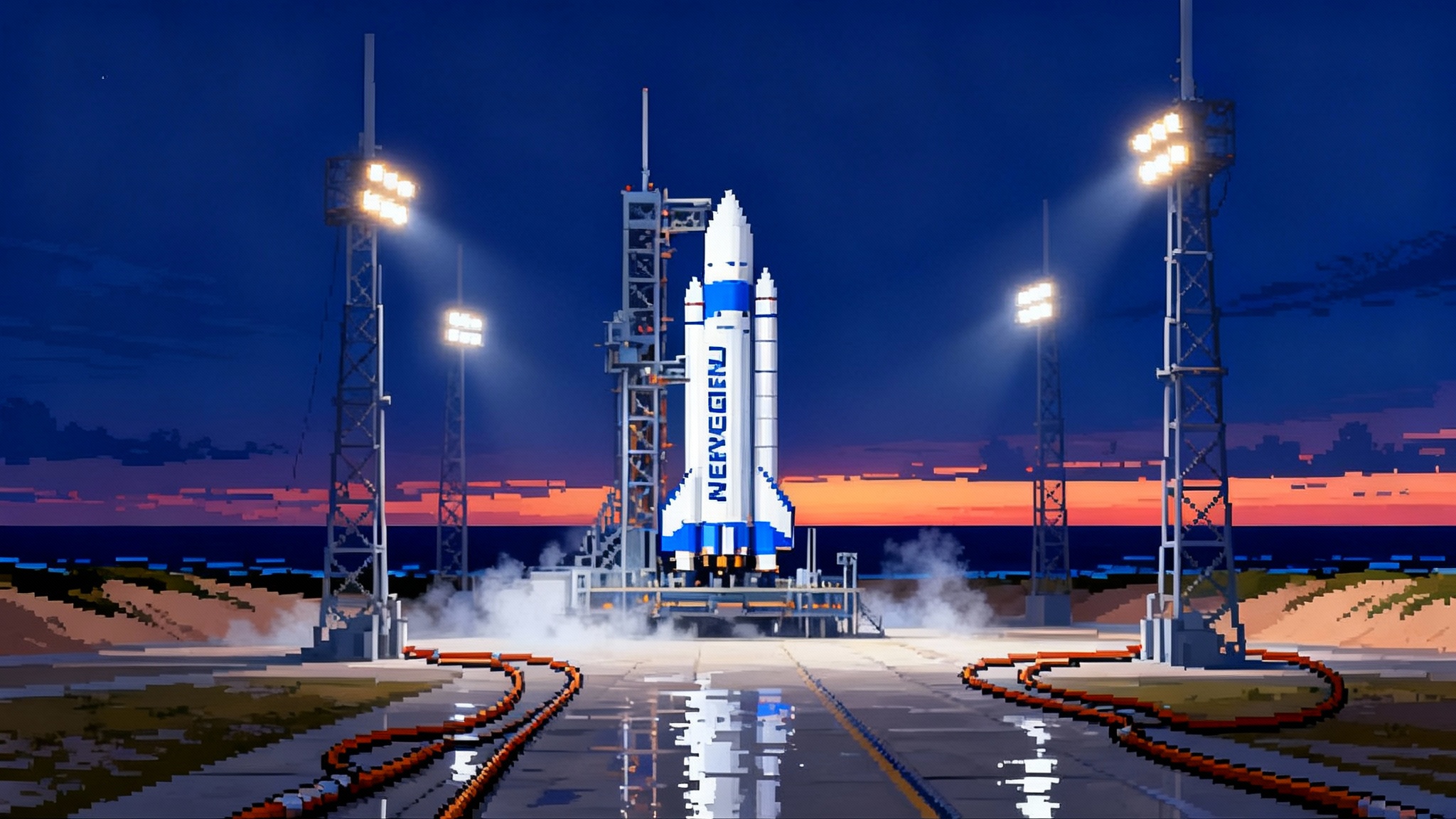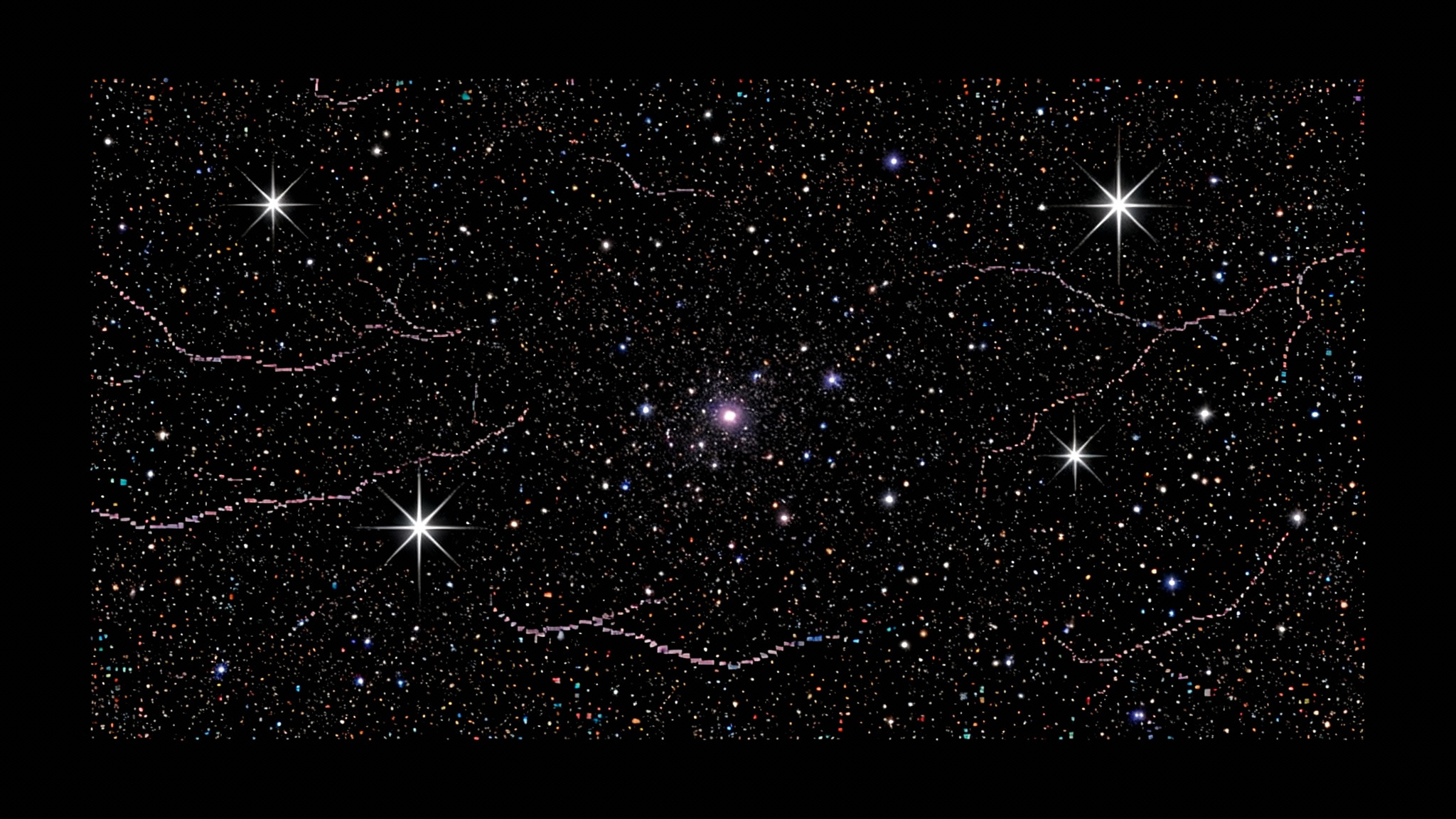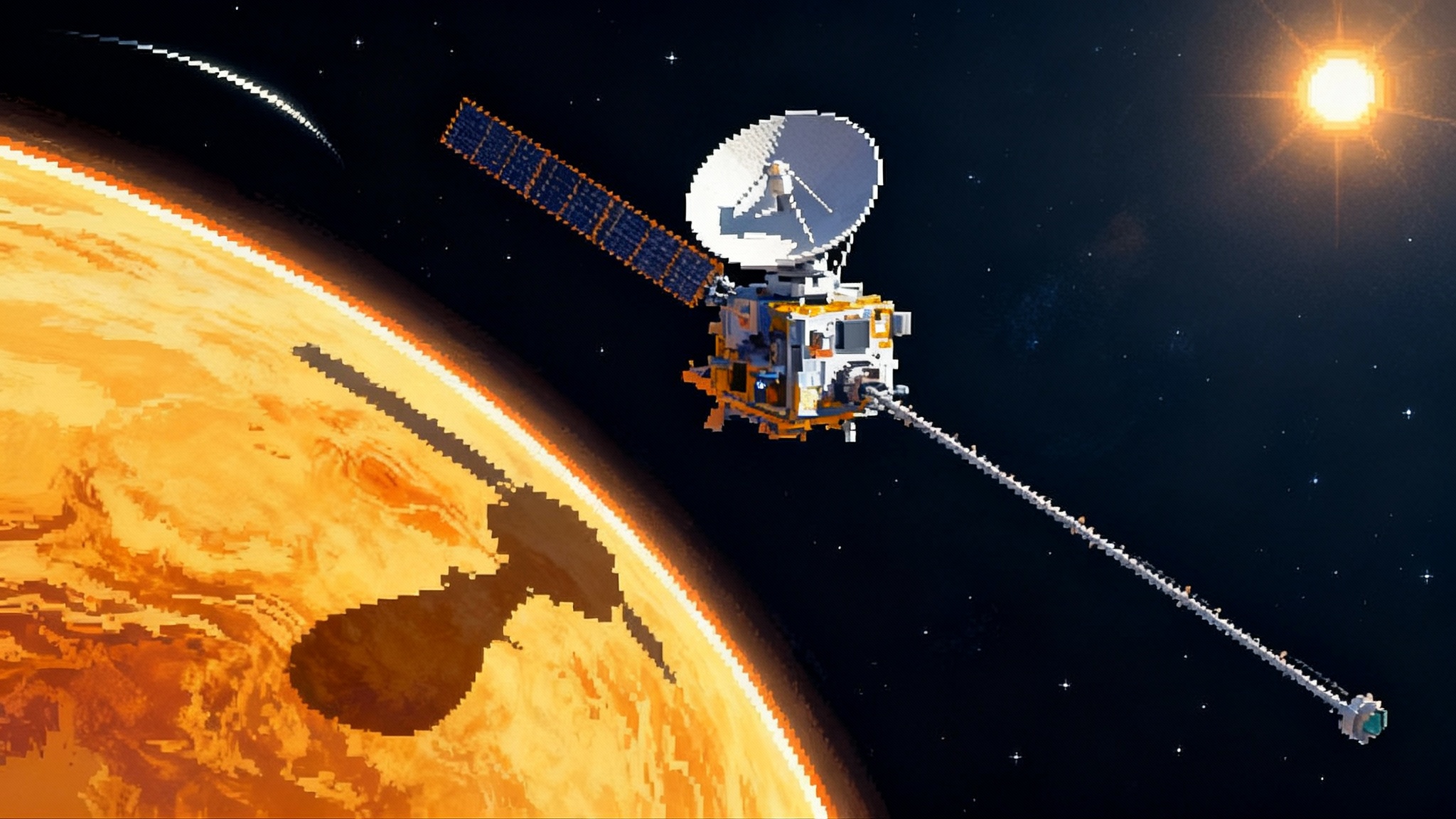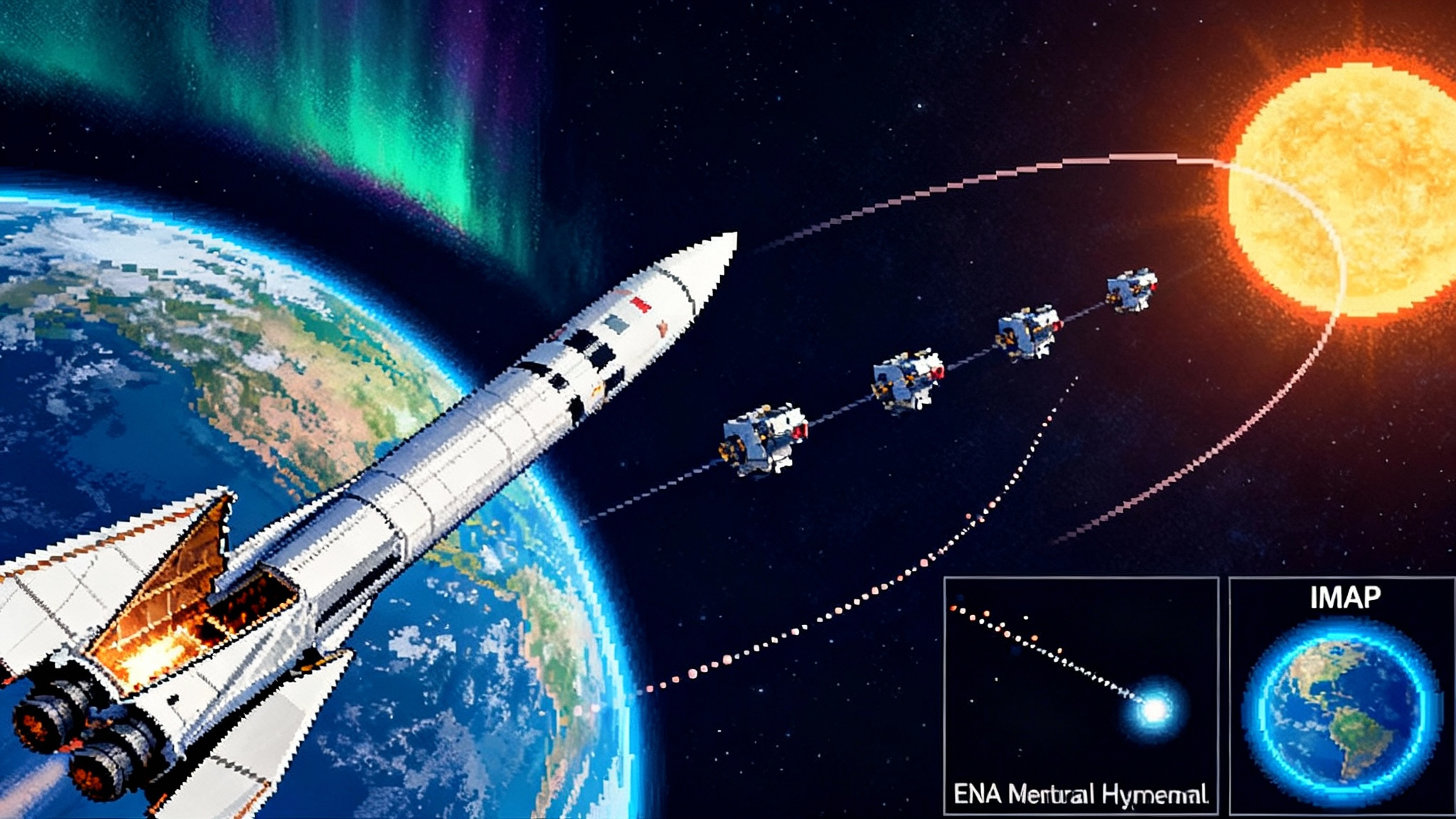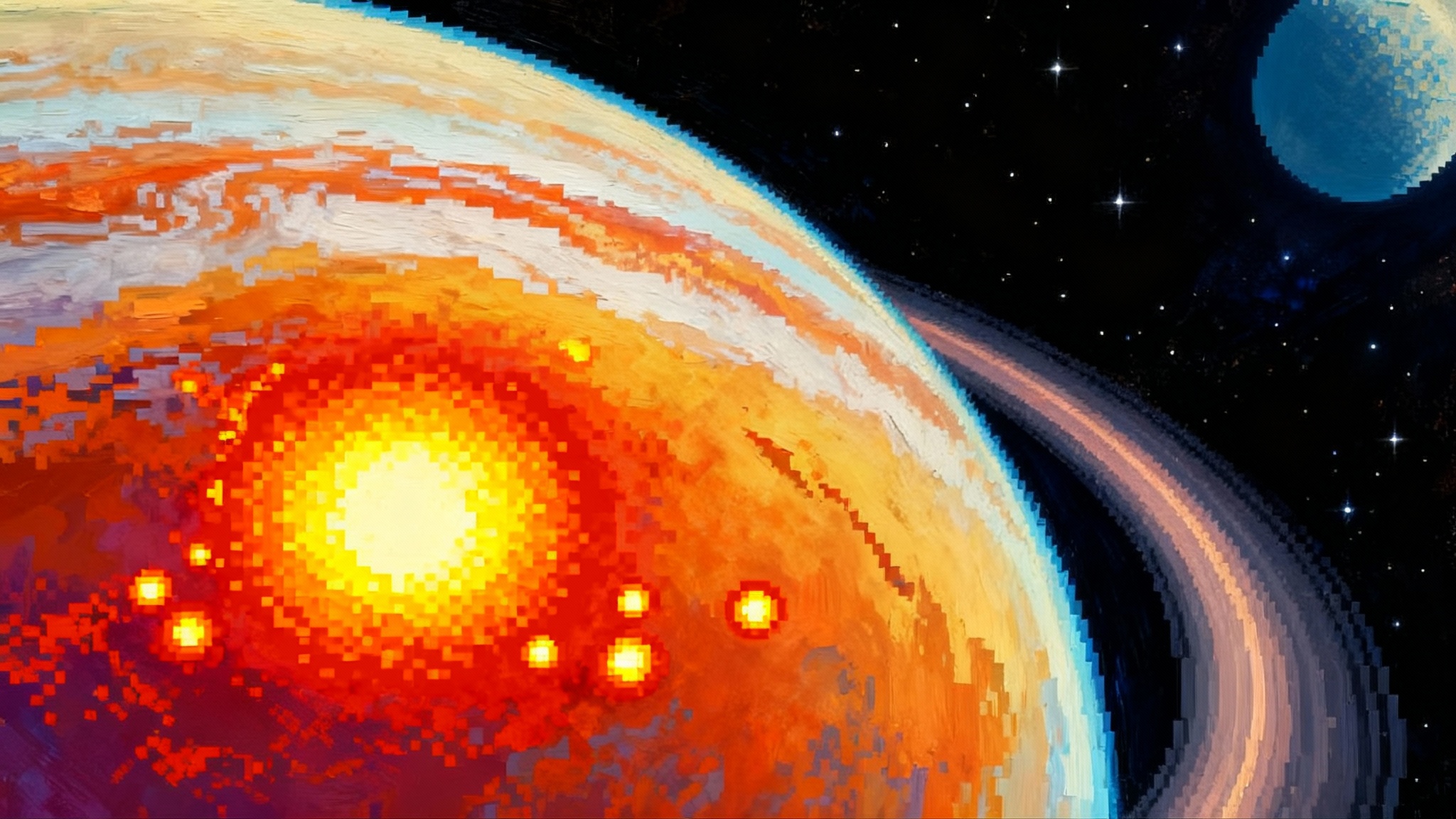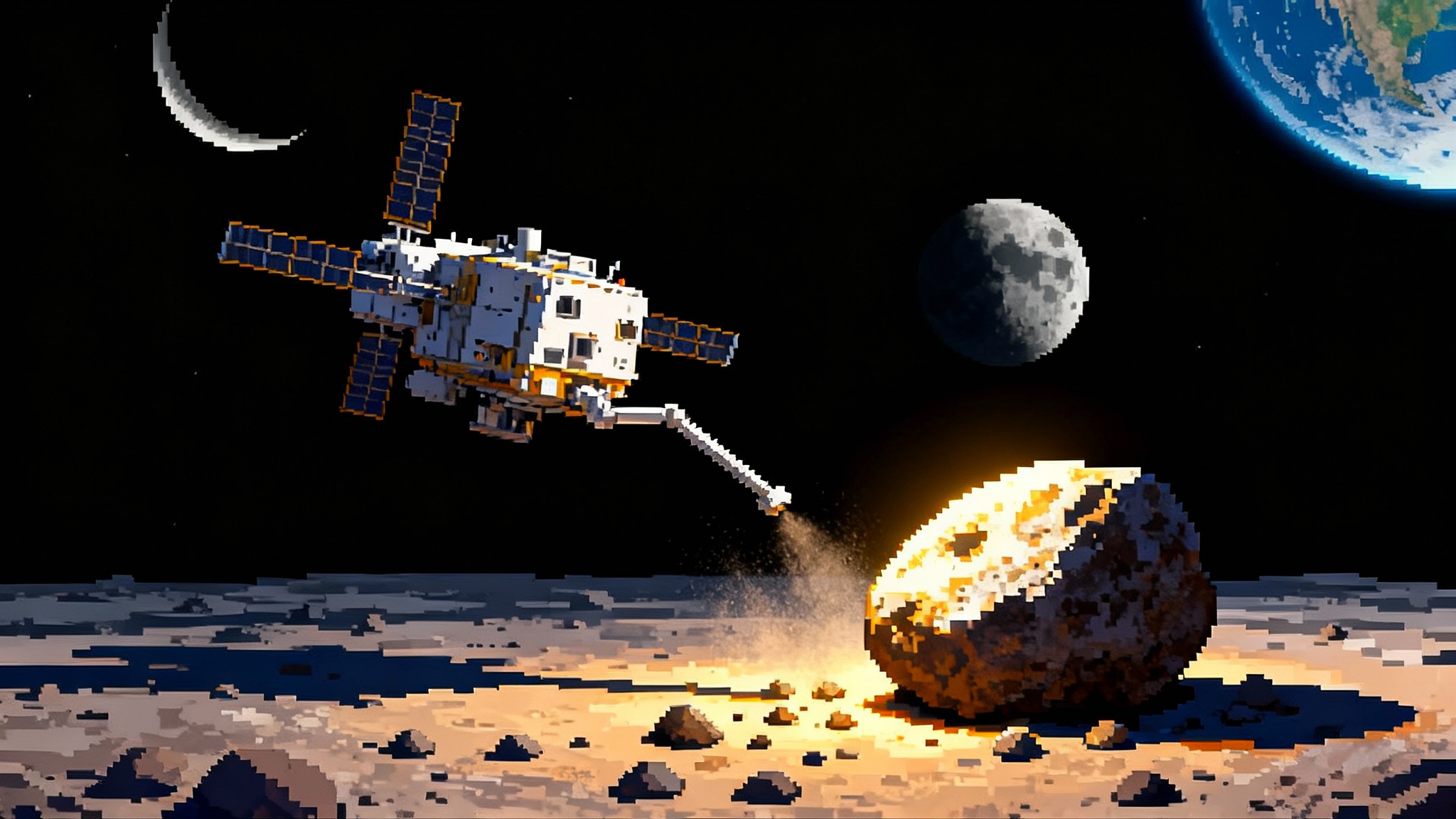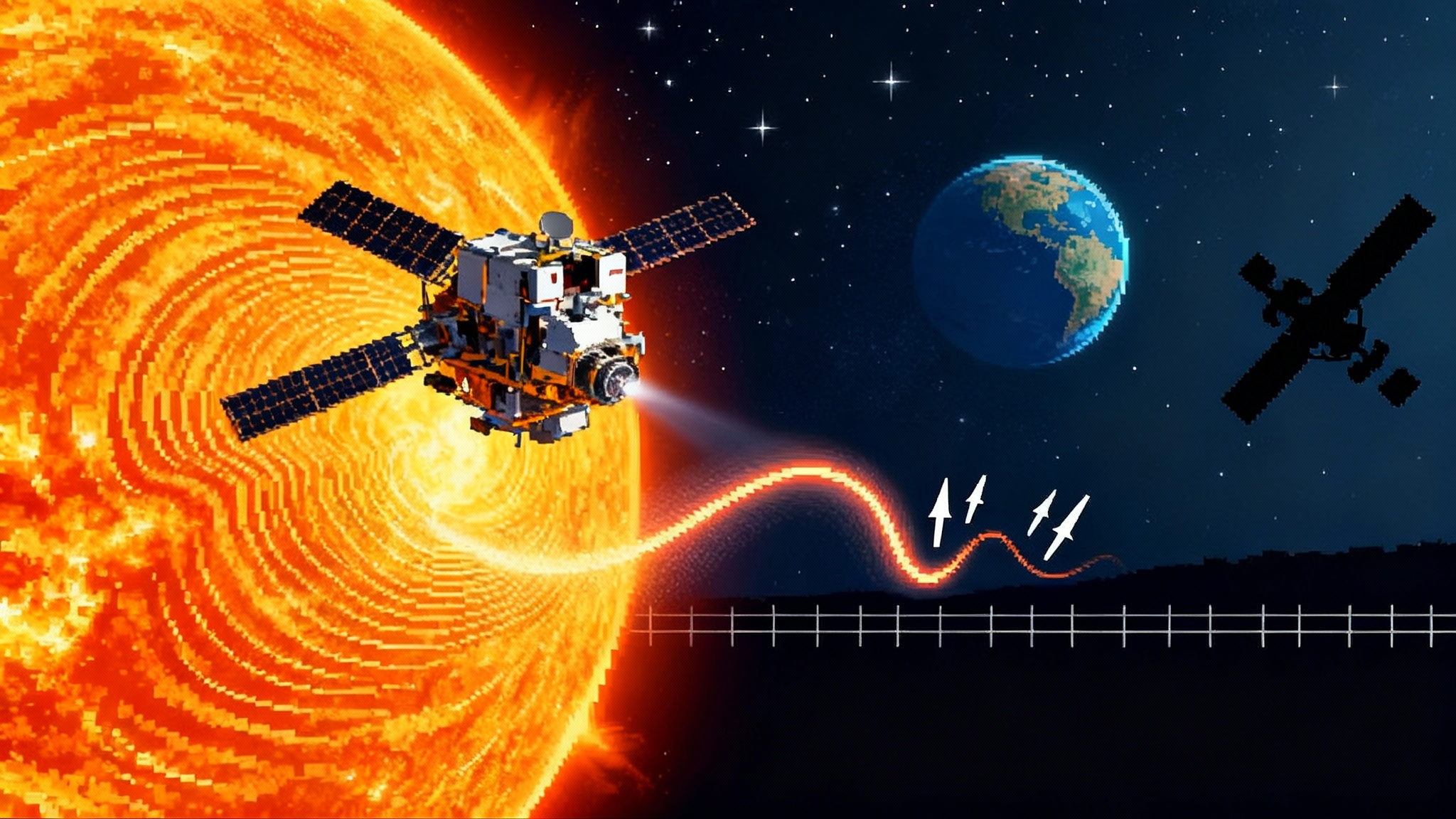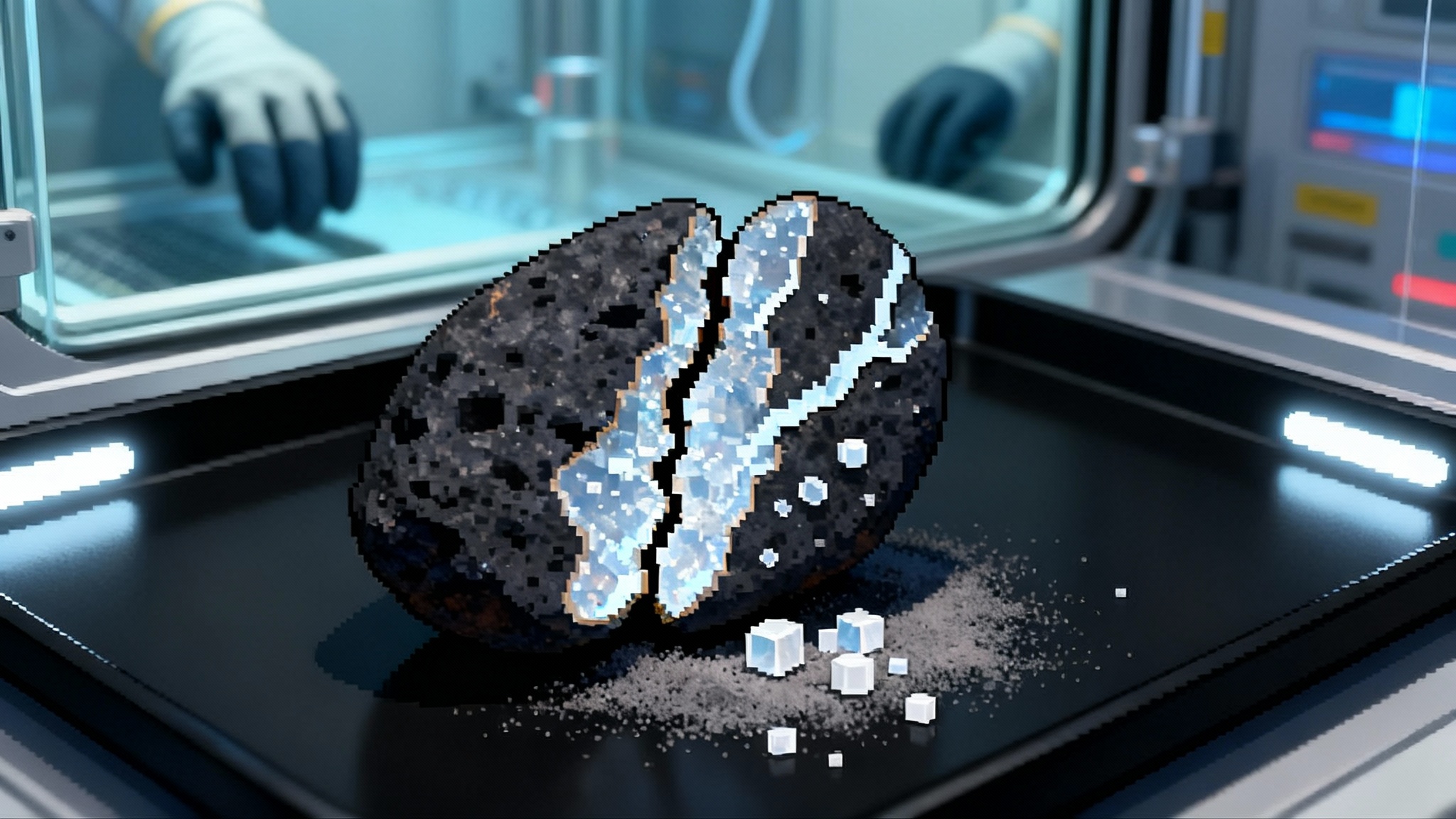Earth’s new quasi-moon 2025 PN7 could change exploration
Astronomers have flagged 2025 PN7 as a newly discovered quasi-moon that closely tracks Earth. Here is how it hid for decades, why its orbit is unusual, and how it could unlock rapid, low-cost missions while sharpening planetary defense.
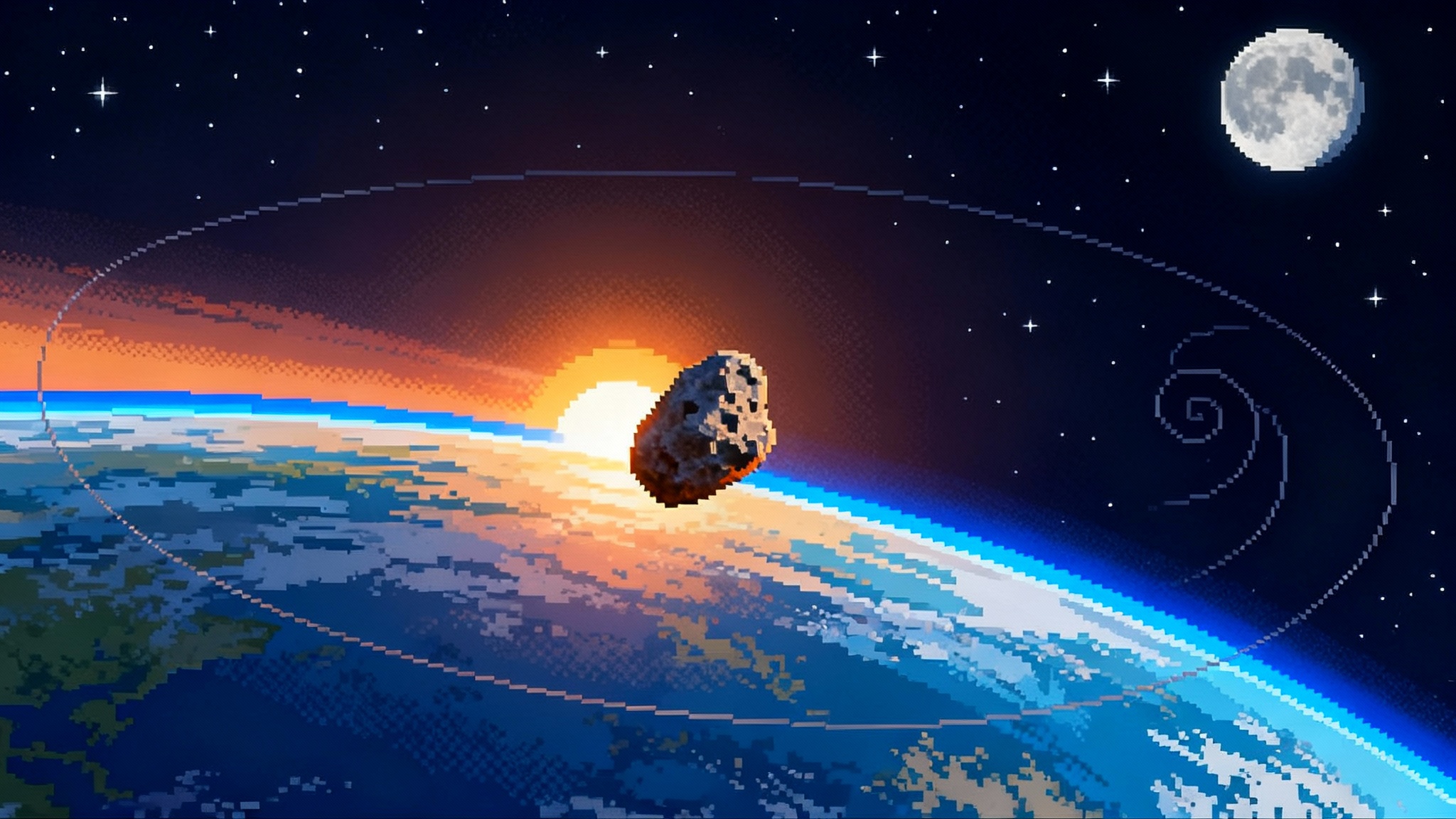
What is a quasi-moon, really?
Quasi-moons are not true moons. They are small asteroids that orbit the Sun on paths so similar to Earth’s that, in a frame of reference moving with our planet, they seem to loop around us. The loops are an optical effect of a 1:1 orbital resonance with Earth. In simple terms, the object takes about one year to go around the Sun, just as we do, but with a slightly different oval and tilt. That slight mismatch makes the object drift slowly ahead of us, then fall behind, drawing graceful corkscrew patterns around Earth in the co-rotating view.
From a dynamics standpoint, a quasi-moon is a co-orbital companion. It is not gravitationally bound to Earth over long periods. It remains bound to the Sun, yet Earth’s gravity and the resonance keep the object nearby for years to centuries. Known examples include Kamoʻoalewa and Cardea. The new arrival, 2025 PN7, has just joined the club.
In early September 2025, astronomers published a brief research note proposing that a newly cataloged object, 2025 PN7, is in this quasi-satellite configuration. For a clear overview of that note and its context, see AAS research note coverage.
Meet 2025 PN7: the surprise in Earth’s blind spot
The object was first picked up in August 2025 by the Pan-STARRS survey on Haleakalā in Hawaii. Follow-up calculations and archival searches showed that 2025 PN7 has likely been moving in step with our planet for decades. That raises two immediate questions: how did it escape detection for so long, and what makes its orbit special?
Astronomers estimate 2025 PN7 to be roughly 19 meters across, about the size of a house. That is small enough to appear extremely faint even to large, sensitive telescopes. Its apparent brightness spikes only during rare alignments when the asteroid is both close to Earth and well placed in a dark, moonless sky. Because its path is so Earth-like, those convenient observing geometries do not come often. For much of its journey, 2025 PN7 sits in the dusk or dawn sky, low above the horizon, where atmospheric glow and short observing windows make deep imaging hard.
Another factor is motion. Survey pipelines are tuned to spot streaks and dots moving at expected rates. Many near-Earth objects scoot across the star field fast enough to stand out. Quasi-moons, by contrast, can move deceptively slowly relative to Earth. Their sky motion may be similar to background stars on some nights, making them look almost stationary in short exposures. Detecting them requires careful time series analysis or longer revisits, which can be at odds with the cadence of wide-sky surveys. As facilities like the Vera C. Rubin Observatory ramp up, that gap should narrow; see how the Vera Rubin Observatory will transform NEO searches.
Put those effects together and you get a recipe for a stealthy companion. 2025 PN7 probably drifted through our field of view many times, simply too dim or too still to trigger automated detections until the geometry was just right.
An orbit that mirrors Earth’s but breaks the rules
2025 PN7’s orbit is Earth-like but not identical. Think of Earth’s path as a racetrack lane and 2025 PN7 as a runner in a nearby lane moving at nearly the same speed. Because its lane is slightly offset and a bit more oval and tilted, the asteroid sometimes lags, sometimes leads, and sometimes seems to loop around us.
Key characteristics, based on the early orbit solutions, fit the pattern of an Arjuna-class near-Earth object. These are asteroids with semi-major axes near 1 astronomical unit, low inclinations of only a few degrees, and modest eccentricities. That recipe is perfect for quasi-satellite behavior. Dynamical integrations suggest 2025 PN7 has been near Earth for many decades and will likely remain in a quasi-satellite state for on the order of a century before gravitational nudges by the planets and the subtle pull of solar radiation pressure nudge it into a different co-orbital mode such as a horseshoe path.
Despite appearing to orbit Earth, 2025 PN7 never settles into a stable Earth-bound orbit like our Moon. Instead, it is best thought of as a long-term fellow traveler. During favorable seasons it can pass within a few hundred thousand kilometers of Earth, comparable to the Moon’s distance, then wander tens of millions of kilometers away during the horseshoe-like phase of its cycle. These long, slow dances are part of what makes quasi-moons both challenging to find and scientifically valuable once we do.
Why this tiny rock matters for planetary defense
There are three reasons 2025 PN7 is a meaningful discovery for planetary defense.
-
It tests our blind spots. Survey systems have improved dramatically, but quasi-moons expose a weakness. Objects that are faint, move slowly against the stars, and hug the twilight sky are harder to catch. That argues for more capability pointed near the Sun’s direction and for night-to-night linking algorithms that are more tolerant of slow apparent motion. It also strengthens the case for space-based infrared observatories.
-
It calibrates our risk intuition. A 19-meter object is not civilization-threatening, but it is firmly in the Chelyabinsk class. The 2013 Chelyabinsk airburst came from a similar-sized meteoroid and still injured nearly 1,500 people due to shockwaves. For context on impact implications, see Chelyabinsk airburst lessons.
-
It invites close-up reconnaissance. Quasi-moons are near, linger for years, and have low encounter speeds relative to Earth. That makes them excellent testbeds for rapid characterization from small spacecraft. A cubesat flyby or rendezvous can refine the orbit, measure size and spin, estimate mass from subtle trajectory perturbations, and sample surface properties with a simple imaging spectrometer. Those data sharpen impact models across the size range that matters most for frequent events.
Quasi-moons are low delta-v gifts for explorers
Getting to a small body is usually a game of energy. Many near-Earth asteroids demand significant delta-v for both departure from Earth and braking at arrival. Quasi-moons break that mold. Because their heliocentric velocity closely matches Earth’s, a mission can depart with modest C3 and arrive with a low relative speed. With a clever trajectory that uses a lunar gravity assist, some quasi-moons can be reached within months by small spacecraft with total delta-v in the low kilometer-per-second range. See how delta v shapes missions in how delta v shapes missions.
The low relative speed at rendezvous is just as important. It reduces the propulsive cost of station keeping and proximity operations, which often dominate small-body mission budgets. It also makes optical navigation simpler and safer for small spacecraft with limited sensors.
Proof by example: China’s Tianwen-2
If quasi-moons sound like dream targets for fast missions, that is because they are. China’s Tianwen-2 launched in May 2025 and is en route to Kamoʻoalewa, a larger quasi-moon discovered in 2016, for a sample-return attempt followed by a rendezvous with a main-belt comet. For timelines and technical context, see the concise SpaceNews mission brief. Tianwen-2 is not small, but it demonstrates the strategic logic: quasi-moons offer repeated launch windows, reasonable flight times, gentle arrival speeds, and outsized science.
A realistic rapid-rendezvous cubesat to 2025 PN7
What would it take to send a small, fast mission to 2025 PN7 within the next couple of years? Here is a feasible outline built around commercial hardware and rideshare realities.
Mission class
- Platform: 12U to 27U cubesat, 24–60 kg wet mass.
- Propulsion: either a compact chemical stage for impulsive burns or a 100–200 W class electric propulsion unit using xenon or iodine. The electric option provides roughly 1.5–2.5 km/s total delta-v over several months, well aligned with a low-energy rendezvous.
- Power: deployable solar arrays producing 150–250 W at 1 AU, with a 150 Wh battery.
- Comms: X-band transceiver, high-gain patch or small dish, compatible with DSN or commercial deep-space networks. Ka-band optional for higher data rates during close operations.
Getting off the ground
- Launch: rideshare to a high-energy drop-off such as GTO, GEO supersynchronous, or a translunar injection. Rideshares to lunar space are increasingly common, and a translunar drop-off reduces the escape energy the cubesat must supply.
- First month: commissioning, then a perigee-raising campaign if needed. A small deterministic burn sequence sets up a lunar gravity assist that tilts and tunes the heliocentric departure with minimal propellant.
Cruise and rendezvous
- Trajectory: a lunar flyby provides the plane change and phasing needed to slip into the co-orbital stream. Electric-propulsion spirals trim the remaining mismatch. Total flight time to first approach can be as short as 6–10 months depending on launch date.
- Navigation: star tracker plus a narrow-field camera for optical navigation. During the final weeks, the cubesat transitions to relative navigation by landmark tracking as the asteroid’s apparent size grows to a few pixels.
Proximity operations
- Approach: braking to a few centimeters per second relative speed, holding at 10–30 km for initial characterization. Because the gravitational field is negligible, the cubesat relies on station-keeping thruster pulses and momentum management with reaction wheels.
- Observation campaign: a simple but high-value payload suite might include:
- A medium-field color camera for shape modeling and context imaging.
- A near-infrared point spectrometer for surface composition and space weathering clues.
- A mini LIDAR or laser rangefinder to support navigation and coarse topography.
- A thermal IR microbolometer to infer regolith properties and boulder abundance.
- Operations timeline: two to six weeks is enough to deliver shape, spin state, surface roughness, and color-composition maps at meter-scale resolution. If mass estimates are desired, the cubesat can perform gentle arcs to sense tiny gravity tugs, though measurement precision will be modest for a 19-meter target.
Risk and reliability
- Object faintness: 2025 PN7 is dim. The concept mitigates this with a dedicated approach camera optimized for low stray light, long exposures, and image stacking. The trajectory is designed to approach from favorable phase angles to maximize reflected light.
- Ephemeris uncertainty: early in a discovery, orbit solutions improve rapidly as new astrometry arrives. The cubesat carries sufficient propellant margin and uses optical navigation during cruise to refine the intercept in real time.
- Attitude control: proximity operations around a micro-asteroid demand gentle torques. Reaction wheels are sized for long slews at low rates, with magnetic torquers used during early Earth orbits and cold-gas or small reaction control thrusters for wheel desaturation later on.
Budget and schedule
- Hardware: the platform and payload can be assembled largely from flight-proven components. With a rideshare launch, the total mission cost can fit within a small planetary technology or rapid-response program. From authority to proceed to launch, an 18–24 month schedule is realistic given the modest payload and the use of commercial off-the-shelf parts.
Scientific payoff
- Surface taxonomy: even a low-resolution spectrum can discriminate between silicate-rich and potentially lunar-like material, a question already raised for Kamoʻoalewa.
- Space weathering and regolith: thermal inertia and color variations reveal how quickly small, near-Earth rocks mature in sunlight and how their surfaces respond to micrometeoroid bombardment.
- Dynamics in action: repeated imaging of the background star field while hovering refines the orbit of 2025 PN7 and constrains non-gravitational forces such as the Yarkovsky effect on a house-sized body.
What 2025 PN7 tells us about the near-Earth neighborhood
The discovery is a reminder that near-Earth space is more structured than a random swarm of rocks. Resonances carve out niches. Co-orbital zones gather objects in ways that our surveys only now have the sensitivity and software to perceive. Quasi-moons are rare but not unique. As next-generation surveys expand and space-based infrared searches come online, we should expect more of these subtle companions to appear in our catalogs. For additional mission-planning background, see how delta v shapes missions.
The bottom line
- Quasi-moons are small asteroids in 1:1 resonance with Earth that only seem to orbit our planet. They are Sun-orbiting neighbors with Earth-like years.
- 2025 PN7 is a new member of this class. It is small, faint, and was hard to see until geometry tipped in our favor. Its orbit will likely keep it nearby for decades yet; see the early AAS research note coverage.
- For planetary defense, PN7 highlights blind spots and offers a nearby testbed for rapid reconnaissance. Review the Chelyabinsk airburst lessons.
- For exploration, co-orbitals are low delta-v, quick-turn targets. With Tianwen-2 blazing the trail at Kamoʻoalewa, summarized in the SpaceNews mission brief, a rapid PN7 rendezvous is both scientifically rich and financially attainable.

